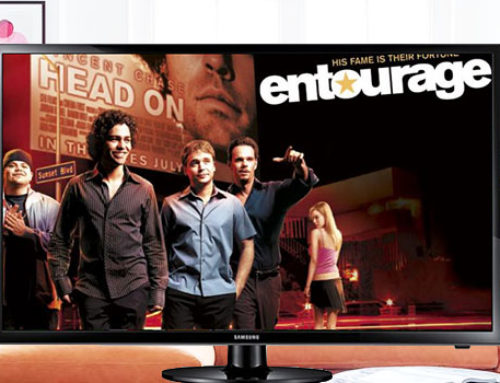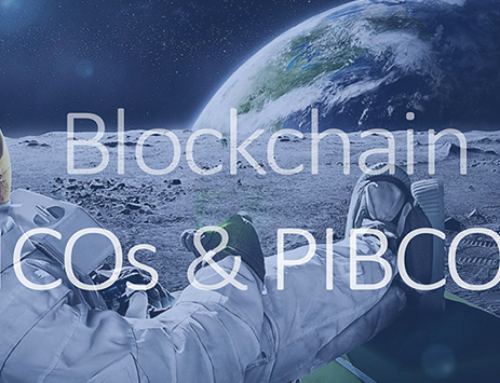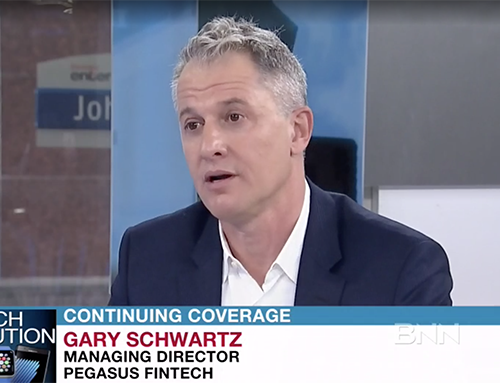How alternative financing companies can challenge the daily engagement banks still command with their customers.
This holiday season, we witnessed the continued and painful decline of main-street retail as consumers increasingly shop on their mobile devices. Retailers are deploying omni-channel strategies to mitigate lost sales in their stores and move their customers to more efficient and cost-effective cloud-based, mobile channels. Should the corner bank be concerned? Some say no. Bank managers still see cradle-to-grave customer affinity at the same time the bank’s marketing department has managed to move many account holders into a mobile relationship, and own a unique real-estate position on the smartphone.
The future seems positive for banks (according to a Salesforce white paper on banking behaviour in May 2016), with 75% of millennials dependent on their mobile banking apps. Customers are opening their larger screens and mobile apps daily to check their accounts, pay bills, make deposits and transfer funds. However, is it this very advantage that makes the banking industry more precarious now than before mobile services entered main street? The incumbent may be up for grabs.
More than ever before, there are more opportunities for alternative financing companies to shake up the banking industry. Remember that these are the same customers who abandoned their Facebook accounts for Snapchat, their iTunes for Spotify, their Tinder accounts for Bumble, and Twitter for … what? Loyalty is increasingly fleeting.
Mobile dating
Let’s look at the incumbent banking sector. Forward-thinking banks are retrofitting their bricks-and-mortar branches with more automated functionality. They’re attempting to act as a financial concierge. Their staff are retrained to encourage customers into the cloud. And well they should. Young consumers are looking to skip the line and deposit their cheques and perform other banking services instantly.
Tech leaders such as the Bank of America (BOA) and ING have successfully created an agile technology environment to enhance their digital services and increase responsiveness to customers. Tangerine of Canada and Fidor Bank of Germany have shed their physical footprints and gone digital native. These are full-fledged banks that are built and branded on technology and communications platforms. They have subbed their teller window for engagement channels such as video chat.
On the fringe, banks are going beyond mortgage calculators, digital cheque deposits and fraud alerts. Innovative banks are not only mobilising existing services, but adding mobile-first features such as with Scotia Bank of Canada, embedding consumer’s shopping receipts and vouchers into the mobile bank ledger. America First Credit Union of Utah allows customers to search for their next car purchase and apply for financing without leaving the mobile banking app.
Leviathans such as BOA have the ability to migrate its 25 million online customers using an internal technical team. However, it’s not feasible for most smaller banks to build, deploy and maintain a leading-edge mobile banking platform. To go beyond optimising digital processes, banks invariably find they need to partner, acquire and outsource mobile development to technology companies. Regardless, the bank will never win based on technology alone.
Sticky relationships
Any marketing rep will tell you that the most important aspect of a mobile strategy is the constant contact that digital affords, and in many cases demands.
A bank customer wants to hear about their bank activity. Younger customers demand immediate alerts when a transfer clears, an overdraft fee has been charged or a cheque bill is paid. Nearly half of millennials want to receive SMS alerts from their bank, and when they have a mobile app on the phone, 28% of millennials would prefer push notifications (Salesforce, May 2016).
It’s the relationship behind the technology that’s crucial to master. It’s the trust that the bank manager establishes at the branch that needs to be ported to the cloud. To this end, the bank has a die-hard weapon. It can lock the consumer in short-term with deposit accounts, and long-term with loans and mortgages. This allows the bank a daily, monthly and annual relationship with its customer. The bank has multiple retail touchpoints providing ample opportunity to continue to cross-sell and upsell additional services.
These same consumers, according to a ‘Consumers and Mobile Financial Services’ study in March 2016 by the Federal Reserve, are checking mobile or online account balances and recent transactions on a daily basis, and are receiving alerts (e.g., a text message, push notification, or email) from their bank on a regular basis.
Among all respondents with bank accounts, mobile banking has already overtaken telephone banking. While there is still an omni-channel relationship with branch (ATM and online banking accounts for the lion’s share of contact), over the next few years mobile will undoubtedly make these touchpoints redundant as well.
There is a consumer trend to ‘anytime’ financial awareness and access. The bank has become one of five essential apps on the phone: social, entertainment, messaging, search and payment. However, you only need a bank licence for one service: to take government-insured deposits. This is the bank’s strength.
You don’t need a bank licence for most bank services: lending money, moving money and investing money. The bank’s strength in managing a consumer’s deposits is also its weakness. Nearly every bank is restricted by geography and regulation, while alternative services are increasingly nimble and unrestricted. Banks incur significant compliance and security costs, which makes it difficult for the bank to effectively put this consumer cash to work.
Outside of insured deposits, banking products are becoming increasingly commoditised. In response, banks, in an attempt to recapture their declining revenues, have increased their service fees across accounts. At the same time, bank challengers continue to deliver these same services with a better tech experience for lower fees. These alternative financial service providers are attacking the last bastion of the bank: the daily interaction and trust that the deposit account brings.
Daily dating
In the SMB space, some companies have effectively challenged the bank’s daily deposit business. Walmart and American Express prepaid cards, for example, act as virtual checking accounts. Square, Intuit, Groupon and PayPal offer merchant accounts, and like the local bank garner a share of an SMB’s deposits and more face time with the customer.
In the consumer sector, this has been more difficult. Consumers are hard-pressed to move away from deposit accounts such as mobile bill payment and e-cheque deposit services.
One way outsiders have attacked the banks is via payment services. Payment aggregators have worked hard to become the go-to consumer wallet. PayPal, Amazon, Walmart and Apple Pay have all battled for shopper mindshare, disintermediating the bank and bank partners wherever they are able to.
In 2016, Facebook started a ‘Send or Request Money’ service in Messenger, allowing for instant peer-to-peer fund transfer by tethering a debit card; pay for rent or split a dinner bill. Add this to the list of non-bank cash transfer apps: Paypal’s Venmo and Square Cash.
Disintermediating the bank’s daily cash relationship with the consumer hurts. Chase launched QuickPay to try to compete and woo digital consumers back. US big banks banded together with a money transfer service called Zelle.
New technologies are challenging the cash economy. Abra, an international money transfer app, has seen success disintermediating the highly lucrative remittance business using blockchain technology. Consumers use the service on a regular basis to send funds abroad, saving time and avoiding Forex fees.
While Venmo and Square Cash are startups with meagre revenues, if these non-banked digital apps succeed in growing their business, they may jeopardise the bank’s traditional service ladder. Lose a customer on one rung of this ladder and the bank may lose the customer upstream with loans and mortgage opportunities.
Long-term relationships
Upstream, many alternative financing companies are cannibalising the bank’s longer-term lending business. Alternative financial services have moved from subprime or near-prime lending to the underbanked and unbanked, to mainstream financing using innovative technology and processes to make it easier for a consumer to get access to capital when they need it. Financing should be available when the big-ticket purchase is being made.
Alternative financial players are attacking the bank’s long-term lending relationships with their consumers, eliminating slow approval times and hidden fees and providing simple, online credit facilities that are easily accessible via online and mobile portals. More consumers originate long-term mortgages through brokers or other alternative avenues to the point that the product is no longer profitable for many banks.
Many banks have left auto financing, and margins are being squeezed in the mainstay mortgage business. Prime lending by banks on a loaded cost basis isn’t very profitable, but it helps put deposit capital to work. The challenge is that deposit capital needs to go to work quickly in order to manage a reasonable margin. This forces banks to focus on low-margin products, which are then used to acquire and retain customers. Is this a losing battle?
Bank challengers are using increasingly sophisticated algorithms to know their customers. The big data extracted from these algorithms are informing risk models and new loan products. However, this technology, data and statistics analytics will help the company credit model effectively, but will not necessarily help it cultivate a close and trusted relationship with the customer.
The open banking data movement starting in Europe (part of the Payment Services Directive) in late 2017, along with pressure from mobile-first customers globally, will compel banks to make information accessible to third-party developers and bring new, nontraditional players into the market.
Fintech firms will now be able to access data and innovate, as we’ve seen with open data models in ‘smart cities’ globally. Simple services outcomes may be best-price shopping models for banks similar to flight and hotels portals such as Kayak and Booking.com. An open banking system will also empower competitors. It will give alternative lenders a better profile of an applicant and more fluid onboarding into new services.
In the US, Office of the Controller of the Currency will start granting limited-purpose bank charters to alternative financing companies in 2017, with the intention of managing high bank-like standards for new entrants.
Money is becoming ubiquitous, and with so many non-bank choices, an evolution to consolidators may be on the horizon, where consumers can get the ‘best of’ in one spot. The market is moving rapidly to favour consumer choice.
Be a bank
This data will allow an alternative financing company to have a better picture of the customer’s behaviour, but will it allow the consumer to better understand their lender?
While data may provide for a long-term financing relationship with the consumer, there is little to no daily (even monthly) interaction outside of payments statements and promotional inserts, which usually land unopened in the trash.
New financial service companies are challenged to have the same intimate and relevant interaction as a bank with their consumer. These companies need to find a way to become relevant on a daily basis and avoid being relegated to unopened folders on the phone: out of sight and out of mind.
The goal for a new entrant into the market is to, like the bank, forge a short-term (daily) and long-term (annual) relationship with the consumer. Instead of owning one rung of the ladder of banking services, have consumer touchpoints at the bottom and top.
This isn’t a trivial task. Both demand different skill sets. Ultimately, it’s the company that can cast the widest net across services and relationships, and build the go-to trust to cross-sell and upsell, that will be the winner.



